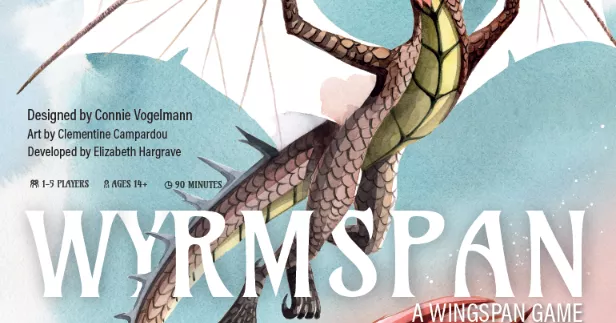If Robots Top Birds, Do Dragons Top Robots?
I’ve been playing Wingspan for a few years now and have always enjoyed the games I’ve played. Recently, a brand new game with a similar feel arrived at the office for review, and my ultimate decision was that in my opinion, the Robots of the new game trumped the birds of Wingspan.
So Raising Robot sits near the top of my favorite games list. But now we have something new from Stonemaier Games, Wyrmspan, a Wingspan-esque game but this time with Dragons! Jamey Stagemaier has been posting a lot about the game on the Stonemaier Games YouTube channel, and we will post one of those videos below.
Wrymspan is using similar mechanics to Wingspan, but Jamey is promising that it’s a bit more difficult and deeper experience. I feel like there will be obvious similarities, and I’m sure a knowledge of Wingspan will help when playing with your new dragons, but it sounds like it will be different enough to warrant adding it to your collection.
Here is more information from the Stonemaier Games website (https://stonemaiergames.com/games/wyrmspan/rules-faq/) , which highlights some of what Jamey says in the video above!
Like its predecessor, Wyrmspan is a game about collecting unique winged animals on a player mat and gaining points from eggs, cached resources, tucked cards, and goal tiles. While Wingspan served as the inspiration, Wyrmspan is a more complex game featuring the following differences:
- You must excavate a cave space before enticing (playing) a dragon to that space by playing a cave card (which has a “when played” benefit); you begin the game with 3 excavated spaces
- Hatchlings (baby dragons) are a type of card found in the dragon deck. They all have an egg cost (you’re hatching them from an egg), an ongoing power whenever you feed them, and a strong one-time ability when they’re fully grown
- Four different guilds (1 per game) offering different in-game and end-game benefits as you progress
- Dragon cards have personality tags referenced by various powers and end-round goals. Every dragon card is designed from scratch; they are not designed as copies of Wingspan cards.
- Actions are performed by spending coins and often eggs (not action cubes), both of which you can save for future rounds. There are even some ways to gain extra coins while you play (in Wingspan, you can never gain extra actions).
- Explore your caves from left to right to activate abilities (not right to left); reaching the end of a cave–when fully excavated and occupied–offers scoring benefits
- There are two nest icons on your cave mat even before you play a dragon (so you can lay eggs on your first turn if you wish)
- Start the game with your choice of 4 cards (from 3 dragons and 3 caves) and a choice of any 3 resources
- Discard down to 9 cards, 9 coins, and 9 resource tokens at the end of each of your turns (a restriction that gives players the creative freedom to actually carry over actions to the next round)
- Gain 6 coins and 1 egg at the beginning of each round (four total rounds)
- No dice (you’re either always gaining a specific resource or your choice of the 4 resources). The food dice are often a nice element of variability and player interaction in Wingspan, but we found it just a little too frustrating in Wyrmspan if all resources weren’t consistently available.
- No bonus cards (these types of bonuses are built into various dragon cards)
- No pink powers (“Once Between Turns”). I like how players can gain things when it’s not their turn in Wingspan, but we’ve noticed that it leads to a lot of questions and confusions among players. Instead, we included “if activated,” “when played,” “end of round,” and “end of game” powers in Wyrmspan.
- A 2-for-1 resource exchange can be used at any time (not just when playing a card)
- Card abilities are optional (unless they benefit other players). If I have a dragon that gives everyone something, that dragon automatically activates. When it would activate, each player, including the owner of the dragon, can choose whether or not to use that dragon’s ability, and that choice is independent. This contrasts with Wingspan, where I (as the owner of the card) could decide that the card doesn’t activate for anyone at the table.
- The end-round goal scoring is friendly. For example, if two people tie for first, they both gain full VP for first place. The next player takes second place.
- Dragon facts are found in a field-guide style book, not on the cards themselves. We found that by separating this text from the cards, we made the dragon cards more vision-friendly (plus, the 32-page full-color book is a fun addition).

